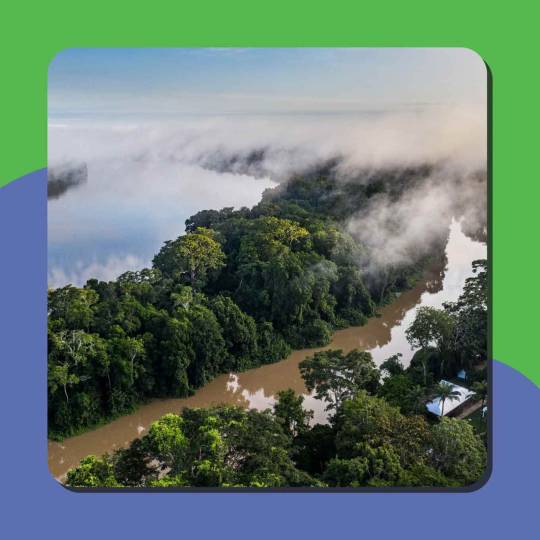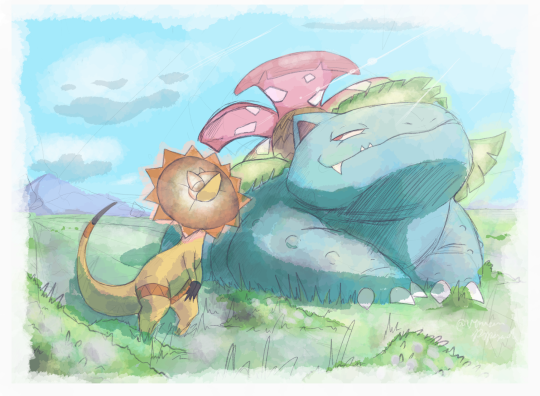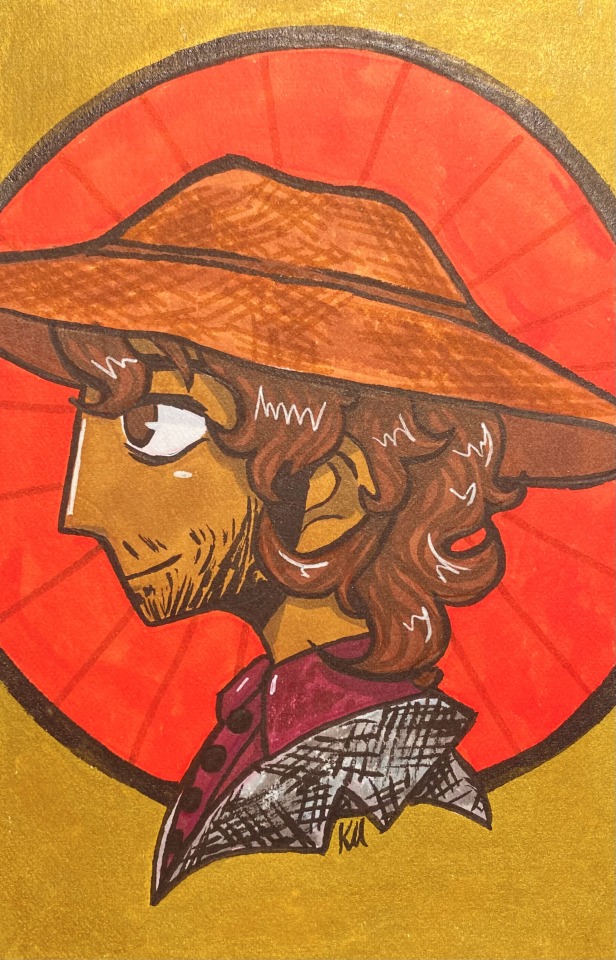#Protected areas
Explore tagged Tumblr posts
Text
"Nouabalé-Ndoki National Park in Brazzaville, Republic of Congo has a lot to celebrate.
The park, which celebrated its 30th anniversary on December 31 of 2023, also shared an exciting conservation milestone: 2023 was the first year without any elephant poaching detected.
“We didn’t detect any elephants killed in the Park this year, a first for the Park since [we] began collecting data. This success comes after nearly a decade of concerted efforts to protect forest elephants from armed poaching in the Park,” Ben Evans, the Park’s management unit director, said in a press release.
Nouabalé-Ndoki National Park was developed by the government of Congo in 1993 to maintain biodiversity conservation in the region, and since 2014, has been cared for through a public-private partnership between Congo’s Ministry of Forest Economy and the Wildlife Conservation Society.

Pictured: Nouabalé-Ndoki National Park. Photo courtesy of Scott Ramsay/Wildlife Conservation Society
Evans credits the ongoing collaboration with this milestone, as the MEF and WCS have helped address escalating threats to wildlife in the region.
This specifically includes investments in the ranger force, which has increased training and self-defense capabilities, making the force more effective in upholding the law — and the rights of humans and animals.
“Thanks to the strengthening of our anti-poaching teams and new communication technologies, we have been able to reduce poaching considerably,” Max Mviri, a park warden for the Congolese government, said in a video for the Park’s anniversary.
“Today, we have more than 90 eco-guards, all of whom have received extensive training and undergo refresher courses,” Mviri continued. “What makes a difference is that 90% of our eco-guards come from villages close to the Park. This gives them extra motivation, as they are protecting their forest.”
As other threats such as logging and road infrastructure development impact the area’s wildlife, the Park’s partnerships with local communities and Indigenous populations in the neighboring villages of Bomassa and Makao are increasingly vital.
“We’ve seen great changes, great progress. We’ve seen the abundance of elephants, large mammals in the village,” Gabriel Mobolambi, chief of Bomassa village, said in the same video. “And also on our side, we benefit from conservation.”
Coinciding with the Park’s anniversary is the roll-out of a tourism-focused website, aiming to generate 15% of its revenue from visitors, which contributes significantly to the local economy...
Nouabalé-Ndoki also recently became the world’s first certified Gorilla Friendly National Park, ensuring best practices are in place for all gorilla-related operations, from tourism to research.
But gorillas and elephants — of which there are over 2,000 and 3,000, respectively — aren’t the only species visitors can admire in the 4,334-square-kilometer protected area.
The Park is also home to large populations of mammals such as chimpanzees and bongos, as well as a diverse range of reptiles, birds, and insects. For the flora fans, Nouabalé-Ndoki also boasts a century-old mahogany tree, and a massive forest of large-diameter trees.
Beyond the beauty of the Park, these tourism opportunities pave the way for major developments for local communities.
“The Park has created long-term jobs, which are rare in the region, and has brought substantial benefits to neighboring communities. Tourism is also emerging as a promising avenue for economic growth,” Mobolambi, the chief of Bomassa village, said in a press release.
The Park and its partners also work to provide education, health centers, agricultural opportunities, and access to clean water, as well, helping to create a safe environment for the people who share the land with these protected animals.
In fact, the Makao and Bomassa health centers receive up to 250 patients a month, and Nouabalé-Ndoki provides continuous access to primary education for nearly 300 students in neighboring villages.
It is this intersectional approach that maintains a mutual respect between humans and wildlife and encourages the investment in conservation programs, which lead to successes like 2023’s poaching-free milestone...
Evans, of the Park’s management, added in the anniversary video: “Thanks to the trust that has been built up between all those involved in conservation, we know that Nouabalé-Ndoki will remain a crucial refuge for wildlife for the generations to come.”"
-via Good Good Good, February 15, 2024
#conservation#congo#republic of congo#elephant#gorilla#endangered species#biodiversity#conservation news#conservation efforts#indigenous communities#national park#protected areas#poaching#elephant poaching#ecology#biology#environment#environmental news#forests
1K notes
·
View notes
Text
#andes amazon fund#andes mountains#amazon rainforest#ecuador#good news#environmentalism#science#environment#nature#animals#conservation#climate change#climate crisis#south america#protected land#protected areas#wetlands
36 notes
·
View notes
Text

I am trying very hard not to cry about this.
Protected Areas are an essential instrument for biodiversity. The same biodiversity we are losing day by day. There is a reason, actually more than one, because they exist. We need them. Our planet is collapsing, and PAs need to stay where they are - or be bigger - so that the trophic net can survive.
We are all connected.
2 notes
·
View notes
Text
The US interior department has announced plans to radically fast track permitting for projects involving fossil fuels and mining citing Donald Trump’s ‘energy emergency’ declaration that many experts say does not exist. The move would reduce to a maximum of 28 days permitting procedures that previously could take multiple years, the department said late Wednesday. Green groups immediately criticized the plans to boost planet-heating fossil fuels and questioned their legality describing them as an extreme change to the nation’s core environment laws. The department said that reviews that now typically take around a year would be reduced to just 14 days while a full environment impact statement that usually took two years would now take less than a month. The announcement will amplify fears the Trump administration will shrink federal protections for national monuments in the west. Interior department officials are considering scaling back at least six national monuments spread across Arizona, California, New Mexico and Utah while analyzing the potential for drilling or mining in the areas, the Washington Post reported on Thursday. The interior department said the plans to fast track permitting were designed to “accelerate the development of domestic energy resources and critical minerals”.
continue reading
#us#us politics#us interior dept#fossil fuels and mining permits#28 days#protected areas#late stage capitalism#environment#climate crisis
0 notes
Link
1 note
·
View note
Text
Uncertain Future of 20,000 MW Hydropower Projects in Protected Areas
Kathmandu — The Supreme Court nullified the amendment to the National Parks and Wildlife Conservation Act, 2029 (1973), which was introduced through an ordinance during the third investment summit on January 15 (Magh 2). As a result, the future of projects located within national parks, protected areas, reserves, buffer zones, and their boundaries has become uncertain. The Independent Power…
#buffer zones#Department of Electricity Development#Environmental Impact Assessment#IPPAN#national parks#protected areas#reserves#Wildlife Conservation
0 notes
Text
#Great Smoky Mountains#Biodiversity#Nature travel#National parks#Wildlife exploration#Hiking adventures#Appalachian Mountains#Eco-tourism#Flora and fauna#Scenic landscapes#Outdoor activities#Protected areas#Mountain ecosystems#Birdwatching#Conservation travel
0 notes
Text
#biodiversity#biomass#birds#bolivia#candice gaukel andrews#china#conservation#environment#extinction#fish#forests#natural habitat adventures#nathab#nature#new zealand#protected areas#reptiles#science#science and environment#scientific research#sixth mass extinction#south america#trees#vietnam#wild#wildlife#world wildlife fund#wwf
0 notes
Text
#signed a former muslim in a mostly muslim area who didnt know people were actually taught that santa existed for the longest time#throwback to the time our white primary school teacher asked what we wanted from santa claus and we were all like. ma'am what do you mean#santa's not real did you think santa was real?#and she had to try her best to protect the like 2 white kids in the class from learning santa doesnt exist#poll#christmas
14K notes
·
View notes
Text
"Mexico’s government recently announced the creation of 20 new protected areas across 12 states and two coastal areas in the country, covering roughly 2.3 million hectares (5.7 million acres). This follows a series of budget cuts to the nation’s environmental agencies.
Officials introduced four new national parks, four “flora and fauna protection areas,” seven sanctuaries, two biosphere reserves and three “natural resources protection areas” under the protection of the National Commission of Protected Natural Areas (CONANP).
“This is a commendable step toward biodiversity conservation and environmental protection,” said Gina Chacón, director of the Wildland Network’s public policy program in Mexico. She told Mongabay these new areas will help preserve the country’s rich ecosystems, foster sustainable practices and protect a broad range of important species and habitats. Though some environmental and Indigenous groups are wary the budget cuts could hinder efforts to conserve these areas.
The newly protected areas will preserve habitat and ecologically important marine areas for various species, including whale sharks (Rhincodon typus), Mexican prairie dogs (Cynomys mexicanus) and jaguars (Panthera onca). They will also help safeguard ecologically important coral reefs and areas of cultural significance to Indigenous communities.
Bajos del Norte, a new national park in the Gulf of Mexico, is the largest new protected area, covering 1,304,114 hectares (3,222,535 acres), almost nine times the size of Mexico City. The area is important to the more than 3,000 families that belong to fishing communities on the Yucatán coast. It is also one of the main grouper fish (Epinephelinae) reproduction sites in the Gulf of Mexico and will safeguard threatened species, such as the rocky star coral (Orbicella annularis) and the hawksbill turtle (Eretmochelys imbricata).
Joaquín Núñez Medrano, the secretary of the UEFAHG or Union of Forestry and Agricultural Ejidos Hermenegildo Galeana A.C. (Unión de Ejidos Forestales y Agropecuarios Hermenegildo Galeana), lives in an ejido — a type of communally owned land used for agriculture and forestry purposes — called Cordòn Grande in Sierra Grande of Guerrero, along the Pacific Coast. For more than 10 years, Medrano’s community has monitored species such as the jaguar and sustainably managed the ejido’s natural resources, without government assistance.
But now, the ejido has been designated a protected area in this latest round of decrees, as it falls inside part of the new Sierra Tecuani reserve. “The goal is to strengthen what we have already been doing but with support to do it much better,” he told Mongabay.
The second- and third-largest newly protected areas are Sierra Tecuani, a 348,140-hectare (860,272-acre) biosphere reserve threatened by illegal logging, forest fires and land use changes, and the Semidesierto Zacatecas Flora and Fauna Protection Area, which is important for the recovery of the Mexican prairie dog.
The state of Oaxaca is where the government created the most new protected areas, numbering three: the 90-hectare (222-acre) Playa Morro Ayuta Sanctuary, the 56-hectare (138-acre) Barra de la Cruz-Playa Grande Sanctuary and the 261-hectare (645-acre) Playa Cahuitán Sanctuary. Other protected areas were created in the states of Quintana Roo, Veracruz, Campeche, Nayarit, Zacatecas, Chiapas, Colima, Durango, Jalisco, Chihuahua, Guerrero and the State of Mexico...
President Andrés Manuel López Obrador has protected more areas than any previous administration, with a total of 43 new areas across 3 million hectares (7.4 million acres). But Mexico’s Secretariat of Environment and Natural Resources (SEMARNAT), which works to safeguard the environment, has become severely cash-strapped throughout his six-year term.
SEMARNAT is one of many sectors in Mexico undergoing funding cuts. In recent years, Obrador’s government has implemented a series of strict austerity measures to free up more money for other areas like pensions and wages, boosting the leader’s popularity among citizens, particularly the working-class. Judicial workers, health services and academia have also had their budgets slashed in 2024...
Juan Bezaury-Creel, the director of the organization Fundación BD BioDiversidad Mexicana, said a protected area is better than no protected area because, once a decree is formalized, the government has a duty to protect it. However, this puts “huge pressure on existing personnel because they have to take care of more surface area with less resources,” he told Mongabay.
“The personnel from CONANP are heroic,” he said. “They are putting their lives on the line many times with little budget and little help.”"
-via Mongabay, January 25, 2024
#mexico#lopez obrador#andrés manuel lópez obrador#protected areas#environment#deforestation#environmental issues#national park#gulf of mexico#yucatán#oaxaca#endangered species#good news#hope#whale shark#prairie dog#jaguar
346 notes
·
View notes
Text

Drawing Venusaur with every Pokemon pt. Heliolisk
#a good example of mutualism here#heliolisk knows the best basking spots#and venusaur protects the area from predators#venusaur#heliolisk#pokemon#fanart#artists on tumblr#digital painting#🌺
1K notes
·
View notes
Text
Like if you have a problem with the concept of deportation as a whole or a problem with the fact that you don't usually need a jury to agree to a conviction to be deported (just a judge.) And that's really the only issue here. Wouldn't it make more sense to champion one of the like million and a half 5 year olds arrested at school forced to go to deportation hearings without their parents? Who are then deported after having no idea what just happened? Rather than a leader of an organization who's stated goal is the "total eradication of Western Civilization" through violence and that organized a day of mourning for Sinwar?? Perhaps??
Or maybe this is all happening for the reasons that gentiles repeatedly scream in our faces, which is that they just don't think murdering Jewish civilians should be considered terrorism? And maybe we have to look honestly at our instinct as Jews to defend this behavior as soon as there are consequences for it, like maybe we still think that if we let antisemites harrass us enough, they will stop short of killing us?
#swinging a bat at a hornet's nest but im so angry#you guys are completely throwing the jews who live here under the bus#maybe i don't want to keep having to live in an area wallpapered with HAMAS IS COMING and red triangles??#maybe the jews at Columbia dont want to go to school with yet another guy who regularly organizes#protests in favor of murdering them?#maybe i dont want my old jewish dad to keep getting harassed by these so called protesters screaming we are hamas at him????#maybe just maybe some of you are doing a bit of a jvp jew thing?? where you think denouncing consequences#for terrorist supporters you don't have to deal with will protect you from further antisemitic backlash??#spoiler alert it wont and even if it did you should not be throwing other jews under the bus in pursuit of that!!#gingerswagfreckles#antisemitism#leftist antisemitism#jumblr
175 notes
·
View notes
Link
1 note
·
View note
Text

Abalone Shell (Haliotis sp.) found at Moss Cove in Laguna Beach. We did not collect this (or anything we found) but this was a beautiful surprise (and my first time finding an abalone shell in the tide pools). This beach is considered a no-take Marine Protected Area; where taking, collecting, and disturbing marine life is prohibited (includes shells/rocks).
White abalone and black abalone are listed as federally endangered under the Endangered Species Act. Marine heatwaves and ocean acidification affect both the development of abalone (preventing the formation of their calcium carbonate shells) and kill the seaweed they need to eat to develop and live in. Withering Abalone Syndrome, a bacterial disease, also threatens abalone populations.
#marine protected area#abalone shell#abalone#endangered species#moss cove#laguna beach#beach#california#marine biology#Haliotis#Haliotis sp.
149 notes
·
View notes
Text

" Blooming Wld Garlic " // © Radoslav Černický
#Little Carpathians Protected Landscape Area#Western Slovakia#nature#landscape#Forest#Trees#Wildflowers#Wild Garlic#Fog#Vegetation#photography#aesthetics#wanderlust#explore#follow#discover
109 notes
·
View notes
Text

Yeehaw it’s my favourite western character Texas man from British vampire gothic horror by famous Irish guy
#I made this awhile back and was waiting for a big Quincey day to post this but fuck it I love how this turned out#quincey morris#quincey p morris#dracula#dracula daily#re dracula#re: dracula#Art#traditional art#artwork#illustration#markers#alcohol markers#lol I’m actually a huge western enjoyer (but no one else around me is so I basically have no interaction with the genre :( )#I used to find the southwest as a setting boring but then my family dragged me out to Utah and Arizona and something just clicked#Like. Oh. These are beautiful vast areas with a stunning geography and a vibrant history and culture#And out west 110 Fahrenheit feels like 80 Fahrenheit which was crazy to me (I made sure to wear a lot of sun protection)#I also realized I was gay and that played into it
194 notes
·
View notes